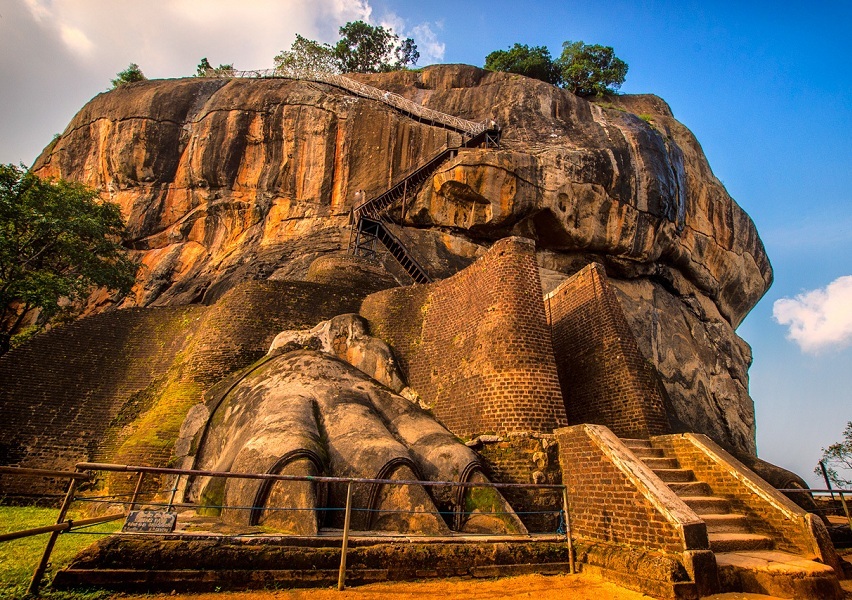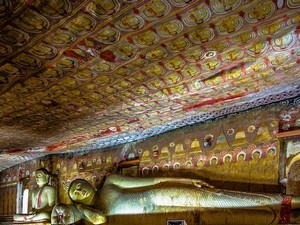Sigiriya Rock Fortress, Sigiriya - Timings, History, Architecture, Best Time to Visit
 #1 of 9 Places to Visit in Sigiriya
#1 of 9 Places to Visit in Sigiriya
 Distance (From Sigiriya): 5 Kms
Distance (From Sigiriya): 5 Kms
 Trip Duration (Including Travel): 2-3 Hours
Trip Duration (Including Travel): 2-3 Hours
 Transportation Options: + Walk/Trek
Transportation Options: + Walk/Trek
 Travel Tips: None
Travel Tips: None
At a distance of 5 km from Sigiriya Airport, Sigiriya Rock Fortress is an ancient rock fort situated in the town of Sigiriya, Sri Lanka. It is probably the most iconic and important national monument of Sri Lanka and among the must-visit places as part of Sri Lanka Tour Packages.
Perched atop a 200m high rocky plateau, Sigiriya Rock Fortress or the Lion Rock Fortress is a UNESCO World Heritage Site. The rock itself is a lava plug left over from an ancient long extinct volcano. According to history, Sigiriya was used as a monastery in the 3rd century BCE. In 477 CE, King Kashyapa of Anuradhapura moved his capital from Anuradhapura to the more secure Sigiriya, where he built a sophisticated city and fortress to protect it from intruders. After his death, the site fell into decline and was again used as a Buddhist monastery till the very end of the 14th century. After which it remained largely forgotten, except for brief periods of military use by the Kingdom of Kandy in the 17th century, until being rediscovered by the British in 1828.
Standing stark against a backdrop of jungle and sky, it consists of a citadel and is divided into three parts. The upper part of the site, with the flat rock, has the ruins of the top portion of the palace. The middle section consists of the Lion Gate, the Mirror walls, and its Frescoes which are similar to those found at Ajanta Caves in India. However, the Sigiriya Frescoes exhibit a uniquely Sri Lankan style. And, it is believed that there were initially 500 such frescoes, but merely around 22 of them remain today. The entrance to the inner citadel is through the Lion Rock. This was a sphinx-like structure where people would have to enter the jaws of the lion to enter the city within. Unfortunately, the rock has crumbled and all that's left are the huge paws of the lion sculpture.
The lower part has vast spaces of centuries-old landscape gardens, lily pad-covered moats, mist-crested jungle, ponds, and ancient fountains just beneath the feet of the 'Lion Rock'. The gardens are divided into three distinct forms like water gardens, cave and boulder gardens, and terraced gardens. The gardens were also the center of Sigiriya's monastic activity before and after Kashyapa as there are about 20 rock shelters that were used by monks, some containing inscriptions dating from between the 3rd century BC and the 1st century AD. With its retaining structures, reservoirs and underground pumps made the Sigiriya Rock Fortress one of the best examples of ancient urban planning and irrigation in the world.
Visitors need to climb nearly 1200 steps to reach the upper part of the fortress. An inevitable climb, it may take roughly an hour to get to the site and has the most ethereal looking views of the land below. The climb is quite steep in some areas and is not recommended for the elderly. It is recommended to climb the rock before 9 AM or after 3 PM to avoid intense heat and crowds. Guides are available at the entrance. Carry water bottles with you as there are no selling points inside.
Timings: 7 AM - 5 PM, Closed on Sunday
Entry: LKR. 4500 for Foreigners (includes Museum entry) & LKR. 1500 for Guide















